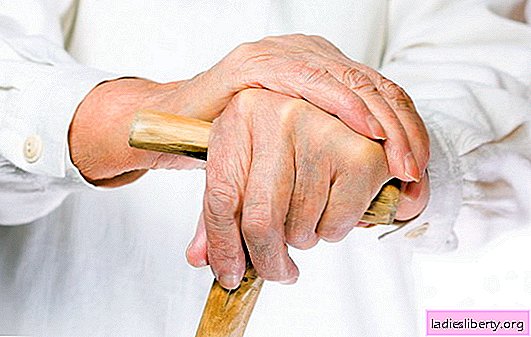
The human hand is a truly unique tool that distinguishes us from most representatives of the animal world.
Due to the complex structure of the brush, a person can perform even the most subtle manipulations with objects.
But high functionality has a downside, in the first place, it is the complexity of the structure and innervation.
The professional activity of a modern person in the vast majority of cases is associated with making the same small movements with fingers and a brush (writing, manipulating a computer mouse, working with small parts, playing a musical instrument, etc.) and is of a sedentary nature.
The human body is not adapted to this way of life, so often failures occur, accompanied by tingling in the fingers and other unpleasant symptoms.
At the same time, discomfort in the area of the hand and fingers accompanies a large number of diseases.
Tingling in the fingers: what is it?
Discomfort in the fingers and hands is an unpleasant and disturbing symptom for the patient. When it occurs, we can talk about a whole group of heterogeneous diseases. This manifestation develops with:
• Pathologies of the central nervous system (affecting the brain).
• Muscular (tendon) disorders.
• Pathologies of the brush.
• Diseases of the musculoskeletal system.
With absolute accuracy, the initial cause of tingling in the fingers can be determined only by the results of specialized studies. One symptom is not enough for this. Nevertheless, something is in the patient's strengths: you need to carefully listen to your feelings. Rarely, tingling develops in isolation, where more often it is adjacent to other symptoms.
What diseases can be suspected if tingling in the fingers is observed?
Among the pathologies of the central nervous system:
1) Neoplasms of the brain. We can talk about both benign tumors (meningiomas) and dangerous malignant gliomas (astrocytomas, oligodendrogliomas). In this case, neurological (focal) symptoms occur. However, tingling in the fingers for brain formations is not a specific symptom, numbness and even paresis are more often observed (but tingling is also possible in the initial stages). Tingling can affect both the fingers of one hand, and two at once. It is important to pay attention to the general symptoms of brain formations:
• Severe headache (occurs mainly in the morning, immediately after waking up, it is constant and can not be removed with any drugs).
• A constant feeling of weakness in the muscles (violation of muscle tone).
Nevertheless, the probability of encountering the formation of a brain is extremely small as a cause of tingling (about 0.5%). In almost 100% of cases, the reason is much more trivial.
2) Cerebrovascular accident. It is observed after an infectious disease, with brain injuries, etc. In this case, the symptoms are also varied and may include:
• Visual impairment (homonymous hemianopsia, scotomas, photopsies).
• Hum in the ears.
• Impaired perception (confusion).
• Fainting.
• Headaches
• weakness.
• Decreased memory and mental activity.
The specific symptomatic complex depends on which area of the brain suffers from a lack of nutrients and oxygen. In general, we are talking about a huge number of symptoms that are obvious to the patient himself.
3) Multiple sclerosis. It occurs mainly in older people. The most informative symptom is a lack of coordination (with it there are difficulties with walking, the gait becomes unsteady).
4) Intracranial hematomas. Squeeze areas of the brain, causing focal symptoms. The development of a hematoma is preceded by a traumatic brain injury.
Muscular (tendon) disorders are represented by tendonitis (inflammation of the flexor and extensor tendons). The leading symptom in tendonitis is excruciating aching pain in the area of the hand, accompanied by impaired motor activity of the fingers.
Pathologies of the hand are in second place in the frequency of tingling in the fingers. In medical practice, carpal tunnel syndrome (also known as tunnel syndrome) is most common.
Often tingling in the fingers is observed with diseases of the musculoskeletal system (mainly the cervical spine).
1) Discomfort in the fingers and hands is observed with cervical osteochondrosis.
2) Hernia of the cervical spine have similar manifestations.
Tingling in the fingers: symptoms
Tingling in the fingers is not a disease. It is itself a symptom. However, as was said, one almost never arises. Almost always, tingling appears in the company of satellites, forming a whole group of symptoms. Among them:
• Discomfort in the area of the hand (pressure, heaviness, bursting).
• Pain syndrome (if the structures of the wrist pain are affected, they are localized on the inside of the wrist joint). The pains vary in character and strength. Most often, patients describe them as burning, pulling, pulsating. In severe cases, pain of high intensity (to the point that it is impossible to make any movements with your fingers).
• Numbness (both the tip of the fingers and any of the phalanges can be numb).
• Feeling cold in the fingers.
All these symptoms are associated either with a violation of innervation (in this case, the causes should be sought in the central nervous system or spine), or with inflammatory processes in the hand.
Tingling in the fingers: causes
The reasons for this manifestation are diverse. They can all be divided into two large groups:
• Mechanical causes (with mechanical causes of discomfort, tingling is the result of prolonged mechanical stress on the hands and musculoskeletal system). In addition to these diseases, similar injuries can be caused by bone injuries, arm sprains (more often in professional athletes).
• Pathological causes (with them, tingling is a characteristic symptom of a disease and, as a rule, secondarily).
Among the mechanical reasons:
• Long stay of the brush in a bent position (scourge of office workers).
• Committing the same type of complex movements with a brush and fingers (found in musicians who primarily play on string-plucked instruments, especially guitar, bass).
In almost all cases, mechanical causes are due to the professional activities of patients. They develop the so-called. tunnel syndrome (inflammation of the median nerve). This is an extremely dangerous disease, fraught with the loss of normal motor activity of the fingers.
Pathological causes, as shown above, are diverse and include various diseases and pathologies (musculoskeletal system, central nervous system).
Tingling in the fingers: diagnosis
Tingling and discomfort in the hands and fingers should alert. There is no urgency, but it’s worth planning a visit to the doctor. First of all, to a neurologist.
Diagnosing the cause of tingling in the fingers is not particularly difficult, but still includes a large number of different activities.
• History taking. The first and most important stage. It consists in an oral examination of the patient. The doctor asks questions about the condition of the patient, the nature of the symptoms. Thanks to this, a specialist can create a primary idea of the nature of the pathological process.
• Carrying out functional tests (checking the sensitivity of the fingers, tendon reflex). It is carried out using light tingling needles and a special hammer.
• Radiography of the brush. It is carried out in order to assess the condition of the bone structures of the hand and exclude their pathology.
• Dynamometry. It is carried out using a hand dynamometer (a special plastic hoop or ring). The patient's task is to squeeze the dynamometer as hard as possible. If there are disturbances in nerve conduction or a decreased muscle tone - dynamometry will help to identify this.
• Radiography of the cervical spine. Often the cause of tingling in the fingers is banal cervical osteochondrosis. X-ray makes it possible to identify the destruction of the vertebrae.
These diagnostic measures are prescribed most often. All the rest - according to indications, with the suspicion of a doctor for more serious diseases.
• Magnetic resonance imaging of the brain, cervical spine, hand. In the first case, MRI is used to detect neoplasms, multiple sclerosis. In the second - it shows the presence or absence of hernias of the discs, in the third - it is used to more accurately assess the structures of the hand (nerves, blood vessels, tendons).
In the vast majority of cases, these examinations are enough to make the correct diagnosis.
Tingling in the fingers: treatment
Treatment is aimed at relieving symptoms and eliminating the underlying cause.
The treatment of multiple sclerosis is a long and complex process that requires an integrated approach. The strategy is determined only by the doctor.
Neoplasms of the brain are subject to surgical excision and biopsy (if localization allows it). According to indications, chemotherapy, radiation therapy can be prescribed. Small formations can be destroyed by radiosurgery.
Treatment of tingling in the fingers with cervical osteochondrosis, diseases of the tendons, musculoskeletal system is to eliminate inflammation.
Non-steroidal anti-inflammatory drugs (Ketorol, Nise, etc.) are used to relieve inflammation. Often, these pathologies are associated with pain. To relieve pain, analgesics are used (Baralgin, etc.). According to the indications, physiotherapy (electrophoresis, magnet) is prescribed. To strengthen the muscles and relieve excessive tension, massage is prescribed (only during the period without exacerbation). At the time of treatment, a sparing regime of physical activity is prescribed.
In general, if we talk about treating directly the tingling in the fingers, it is symptomatic and consists in relieving pain and inflammation.
Thus, tingling in the fingers is a common, but not too informative symptom. To understand exactly what is the reason - a visit to the doctor can not be avoided. The reason can be very serious. But do not worry too much: in most cases we are talking about diseases, although unpleasant, but they are not an immediate threat to life.











